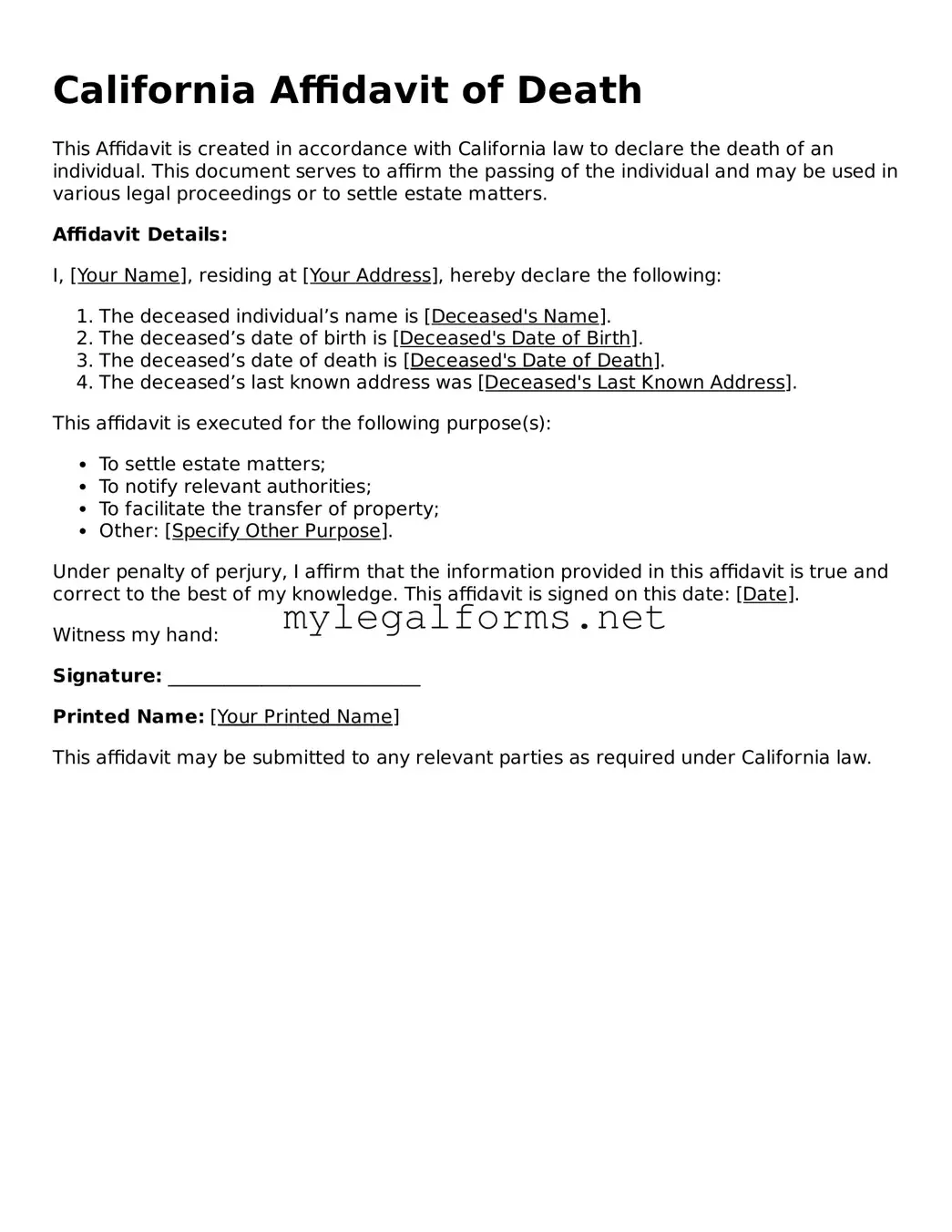California Affidavit of Death
This Affidavit is created in accordance with California law to declare the death of an individual. This document serves to affirm the passing of the individual and may be used in various legal proceedings or to settle estate matters.
Affidavit Details:
I, [Your Name], residing at [Your Address], hereby declare the following:
- The deceased individual’s name is [Deceased's Name].
- The deceased’s date of birth is [Deceased's Date of Birth].
- The deceased’s date of death is [Deceased's Date of Death].
- The deceased’s last known address was [Deceased's Last Known Address].
This affidavit is executed for the following purpose(s):
- To settle estate matters;
- To notify relevant authorities;
- To facilitate the transfer of property;
- Other: [Specify Other Purpose].
Under penalty of perjury, I affirm that the information provided in this affidavit is true and correct to the best of my knowledge. This affidavit is signed on this date: [Date].
Witness my hand:
Signature: ___________________________
Printed Name: [Your Printed Name]
This affidavit may be submitted to any relevant parties as required under California law.
